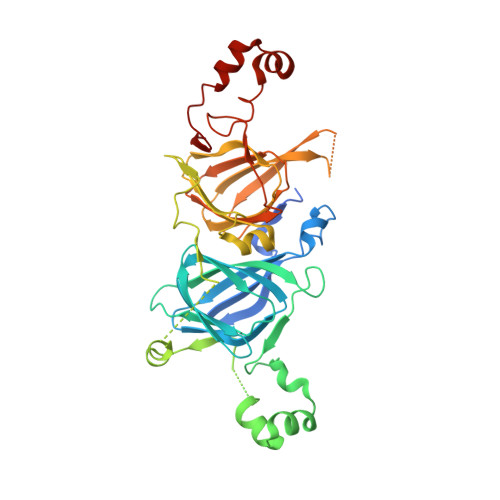Pea and lentil 7S globulin crystal structures with comparative immunoglobulin epitope mapping.
Robinson, K.A., St-Jacques, A.D., Bakestani, I.D., Beavington, B.A.G., Loewen, M.C.(2022) Food Chem (Oxf) 5: 100146-100146
- PubMed: 36573105
- DOI: https://doi.org/10.1016/j.fochms.2022.100146
- Primary Citation of Related Structures:
7U1H, 7U1I, 7U1J - PubMed Abstract:
Legumes represent an affordable high protein, nutrient dense food source. However, the vast majority of legume crops contain proteins that are known allergens for susceptible individuals. These include proteins from the 7S globulin family, which comprise a vast majority of seed storage proteins. Here, the crystal structures of 7S globulins from Pisum sativum L. (pea) and Lens culinaris Medicus (lentil) are presented for the first time, including pea vicillin and convicilin, and lentil vicilin. All three structures maintain the expected 7S globulin fold, with trimeric quaternary structure and monomers comprised of β-barrel N- and C-modules. The potential impact of sequence differences on structure and packing in the different crystal space groups is noted, with potential relevance to packing upon seed deposition. Mapping on the obtained crystal structures highlights significant Ig epitope overlap between pea, lentil, peanut and soya bean and significant coverage of the entire seed storage protein, emphasizing the challenge in addressing food allergies. How recently developed biologicals might be refined to be more effective, or how these seed storage proteins might be modified in planta to be less immuno-reactive remain challenges for the future. With legumes representing an affordable, high protein, nutrient dense food source, this work will enable important research in the context of global food security and human health on an ongoing basis.
- Aquatic and Crop Resources Development Research Center, National Research Council of Canada, 100 Sussex Drive, Ottawa, Ontario K1A 0R6, Canada.
Organizational Affiliation:
















